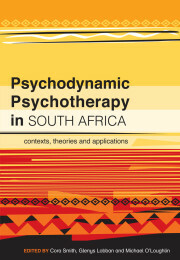Healing the Exposed Being
The Ngoma healing tradition in South Africa- Publication Date: June 2017
- Dimensions and Pages: 234 x 156mm; 304 pp; (31 photographs); Soft cover
- Paperback EAN: 978-1-77614-018-3
- eBook EAN: 978-1-77614-021-3 (North and South America, China); 978-1-77614-020-6 (Rest of world)
- PDF EAN: 978-1-77614-019-0
- Rights: World
- Recommended Price (ZAR): R380.00
Healing the Exposed Being is a scholarly, rich and engaging account of the complex and individualised knowledge systems and passages of influence that shape sangoma practices in South Africa. Thornton’s descriptions of and insight into the philosophies, rituals, and objects of the sangoma, and the ancestors, spirits and others beings with whom they work, change our view of these healers as custodians of the living, advisers, philosophers and guardians. The book is essential reading for anyone interested in health and illness in the region.
– Lenore Manderson, Distinguished Professor of Public Health and Medical Anthropology, University of the Witwatersrand
In Healing the Exposed Being, Robert Thornton presents a new vocabulary and ontology for understanding fundamental concepts of a regional version of the Ngoma cult, found throughout the Bantu language-speaking areas of Africa. He is thus able to provide a more integrated anthropological account of beliefs and practices that have survived from pre-colonial to postcolonial times, describing them in their own terms rather than presenting them as a reflex of modernity or reaction to colonialism, or as a consequence of neoliberalism or other social, political, economic or historical factors.
Bungoma, the knowledge and practice of ‘traditional healing’ in eastern Mpumalanga, is built on the fundamental premise that all persons are exposed to each other and to other person-like agents, including ancestors and witches, among others. This mutual and inescapable exposure is the condition for the possibility of healing, but also ultimately the cause of all illness, misfortune and death. Against this, the sangoma as healer attempts to augment the self of the exposed being through protective magic and by exposing relations between tangible (living human) and intangible (spiritual) agents or persons. Bungoma comprises multiple modalities including trance, music and rhythm, divination, herbal lore, teaching and learning, craftsmanship and healing. The aim of bungoma is to enable patients to heal themselves by transforming their personal narratives of self.
Thornton brings this local anthropology and its therapeutic applications into relation with global academic anthropology by exploring it through political, economic, interpretive and ecologicalenvironmentalist lenses.
Acknowledgements
1. Bungoma, or philosophy of the drum in the South African lowveld
2. The material logic of evil and the augmented self
3. ‘CleavesWater’ eats intwaso: Becoming a healer in the bungoma tradition
4. The transmission of knowledge in Bungoma
5. Healing confl ict: The politics of interpersonal distress
6. Marginal utilities and the ‘hidden hand’ of zombies
7. The market for healing and the elasticity of belief
8. Apotropaic magic and the sangoma’s patient
9. Magical weevils and amaryllis in southern African ritual landscapes
10. Magical empiricism and the ‘exposed being’ in public health and traditional healing
Bibliography
Index
Robert Thornton studied at Makerere University in Uganda, and at Stanford University and the University of Chicago in the USA before beginning a teaching career at the universities of Cape Town and the Witwatersrand, Johannesburg. His publications include Space, Time and Culture among the Iraqw of Tanzania (1980), The Early Writings of Bronislaw Malinowski (1993, with P Skalnik) and Unimagined Community: Sex, Networks and AIDS in Uganda and South Africa (2008).
Healing the Exposed Being is a scholarly, rich and engaging account of the complex and individualised knowledge systems and passages of influence that shape sangoma practices in South Africa. Thornton’s descriptions of and insight into the philosophies, rituals, and objects of the sangoma, and the ancestors, spirits and others beings with whom they work, change our view of these healers as custodians of the living, advisers, philosophers and guardians. The book is essential reading for anyone interested in health and illness in the region.
– Lenore Manderson, Distinguished Professor of Public Health and Medical Anthropology, University of the Witwatersrand

